How to Choose the Right Agar Media for Your Mushroom Cultivation Needs
Every mushroom cultivator should be able to prepare agar media. It is an essential skill for anyone who wants to explore mushroom growing process, and it is easy to learn.
Before you start working with agar media, it is important to understand its components and the necessary parameters for successful preparation.
Types of Agar Media
Depending on the type of microorganism being cultured there are bacterial media, yeast media, moss media, fungal media, universal general-purpose media for different microorganisms.
Some media recipes are specifically designed for bacteriological purposes. For instance, MacConkey selective agar medium has ingredients for isolation gram-negative bacteria. Blood agar and Chocolate Agar provide the unique nutrients needed for the growth and identification of pathogenic bacteria.
If we are talking about mycological purposes let me remind you, that Mycology is a huge world. It's not only about mushrooms we cultivate.
I assume you've heard about medical mycology! Thus Sabouraud Dextrose Agar, which is named after French dermatologist Raymond Sabouraud, was developed for the identification of skin diseases in animals and humans.
Czapek-Dox medium is used in mycology to grow fungi, but saprophytic fungi (e.g., Aspergillus, Candida, Penicillium, and Paecilomyces) and also soil bacteria. It was originally formulated to grow Penicillium camemberti (which is used in the production of Camembert, Brie, Langres, Coulommiers, and Cambozola cheeses) and black Aspergillus.
What about mushroom cultivation?
Agar Media for Mushroom Cultivation
Basal Agar Media. Basal agar media are general-purpose media that provide the basic nutrient requirements for mycelium growth. They are typically used for spore germination and primary strain isolation. Basal media do not contain additional components, supplements, vitamins, or reagents. Almost all types of fungi can be grown on basal agar media.
Complete Agar Media. Complete agar media are basal agar media that have been enriched with additional components or supplements. These additives may include sources of nitrogen, salts of various metals, vitamins, and amino acids. Complete agar media are often used to promote rapid growth and fruiting of mushrooms.
Selective Agar Media. Selective agar media are modified agar media that contain selective agents, such as antibiotics or dyes, or have a non-standard pH (Sabouraud's agar with low pH). Selective agar media are used to inhibit the growth of certain contaminants (bacteria, yeast, mold) while allowing mushroom mycelium to grow.
Storage Agar Media. Storage agar media are low-nutrient media that are used for long-term storage of mushroom cultures. Grain broth, potato broth, or any basal medium with a low nutrient content (about 1%, up to 2%) can be used as storage agar media.
Agar types by ingredients
Defined (synthetic) media. Completely synthetic ingredients has a composition that is repeatable every time. There is no yeast, plant or animal tissue present, and all the chemicals employed are known. These are made from ingredients the exact molecular composition is known. Usually used for scientific researches.
Undefined (natural) media. Nutrient agar medium prepared from natural ingredients: whole grain, flour, honey, potatoes, yeast extract etc. The only drawback of such agar recipes is that the medium is obtained “by eye”. Each time the medium prepared from natural ingredients contain a different set of chemical components and the precise composition is unknown.
What is the best agar recipe for mushroom cultivation
There is no one agar recipe that is ideally suited for the cultivation of all mushroom species and for all purposes. Different mushroom species have different nutrient requirements, and some media are better suited for certain purposes.
Don't use complicated agar recipes for your first attempts. Start simple with natural ingredients.
Use any general purpose agar media for spores germination, primary strain isolation and mycelium reproduction.
Potato/Starch Agar, Malt Agar, Grain Agar are simple and always work great!
Why we don't use one universal agar media for all mushrooms all the time
Nutrients in agar media and their concentration determines the quality and quantity of growth; and whether vegetative growth or sporulation will dominate. For instance, a weak medium with a low C and/or N source suppresses vegetative growth and stimulates sporulation.
For spores germination and primary strain isolation we use more nutrient agar media. For mycelium long term storage on Agar Slants we need to slow down mycelium growth and use low nutrient agar media.
When you get perfect isolated mushroom strain it is recommended to change the agar recipe/ingredient(s) for the next transfers (for mycelium reproduction) to prevent the aging of mushroom culture. Hence you can't use the same recipe all the time for particular strain. Stress is necessary for maintaining the viability of mushroom culture. You have to play with ingredients, add something new.
You can get great yield results if you add some ingredients for agar media similar to substrates you are going to use. For instance, brown rice for agar media and brown rice for grain spawn; ground milo for agar and milo for grain spawn; corn syrup in agar media and 'drippy corn' grain for spawn etc. For dung loving mushrooms, such as Panaeolus, we can play with Manure Agar Recipes. For wood-loving species sawdust can be added (up to 2%) or 3-5g of fruiting substrate you are going to use.
🧬 The introduction of substrates at an early stage stimulates the production of digestive enzymes by mycelium, which will later be needed for the effective cleavage of substrates, which will accelerate the growth of mycelium and fruiting
Antibiotics are not necessary and not widely used for agar media. Mushroom growers mostly work on sterility routine and clean up mushroom culture by Agar to Agar transfer. However while cloning the mushroom tissue or using spores collected in the wild an antibiotic is extremely helpful for isolation healthy mushroom culture. Antibiotics inhibit the growth of bacterial and fast growing mold contaminants. Peroxided Agar (3% hydrogen peroxide (H2O2)) is a cheap substitution for Antibiotic Agar, that inhibits bacteria, yeast and mold spores.
❗️You don't really need antibiotics or peroxided agar unless you are having serious problems with contamination. Details and recipes in the Antibiotic Agar and Peroxide Agar on this page
Some mushroom cultivators are fans of adding activated carbon aka activated charcoal to agar - 10 g per 1 liter for totally black color. It is considered as a bacteria inhibitor and good for stimulation spore germination. I like to work with charcoal agar mostly because it's easier to observe mycelium spreading and black color is helpful during working on strain isolation.
You can use one recipe for one species, but colonize agar cultures at different temperature and find out that some parts of mycelium on agar (strain) growing better at higher temperature, or vice versa at lower temperature. In this case temperature (not the recipe itself) is a game changer. This is a great chance to isolate heat-resistant or cold-resistant strains and use them according to your environmental conditions and season of the year.
At last you can find out that some of your mushroom species/strains grow better or worse on a specific agar medium.
Main nutrients used for Agar Media
Agar powder doesn't have nutritional value on its own. We use agar for making solid form of media.
Water agar medium is a base, where you can add additional required nutrients.
Water Agar (WA) - non-nutrient agar. Actually this is the very first agar recipe.
Water – 500 ml
Agar – 10 g
It must be supplemented with other nutrients for the germination of spores and further mycelium development.
Carbon (C) and nitrogen (N) are the two main macronutrients required by fungi for structural and energy requirements; P, K and Mg are also considered macronutrients for mushrooms, in addition, trace elements such as Fe, Se, Zn, Mn, Cu and Mo appear to be needed for diverse functions (Chang and Miles, 2004).
The simplest sources of carbon, such as monosaccharides, will be the first to be broken down thanks to the low energy cost of doing so.
The only source of nitrogen (N) that all fungi can use is amino acids (Deacon, 2006). Proteins are long chains of amino acids.
The most common nutrients used for agar media are carbohydrates, proteins, vitamins and minerals to ensure healthy growth of mycelium. Usually added:
CARBON: dextrose (corn sugar), light malt extract, grain flour, oat water or boiled potato broth. Some cultivators prefer to mix carbohydrate sources to make more reliable recipes.
PROTEINS: grain flour, soy peptone and potato water contain different proteins and amino acids.
VITAMINS B: deactivated nutritional yeast or brewers yeast.
MINERALS: add a pinch of gypsum (CaSO4) to a 1 Liter of agar for additional calcium (Ca) and sulfur (S) which beneficial for mycelium development. An additional experimental additive is a few drops of liquid concentrate of trace elements. Just make sure that the concentrate doesn't contain silver, which has an antifungal effect.
To modify and improve your agar media you should know exactly what carbon and nitrogen sources prefer the mushroom species you are going to cultivate. If you understand it, then you are able to create your own perfect medium.
❗️If you introduce sources of carbon (sugars) into water agar their percentage in the nutrient medium should not exceed 4% of the total volume. If you introduce nitrogen sources (organic or inorganic), it should not exceed 0.5% of the total volume
Never use the following inhibitors or antifungal ingredients in your recipes: coconut water/milk, onion, garlic, pomegranate, cinnamon, cilantro, curry, cloves, raw coffee, dark coffee beans.
pH of Agar Media
Most mushrooms usually grow best on media high in carbohydrates, with a pH range between 5 to 6.
The pH of all media is usually measured and adjusted to approximately 6.5-7.2 before autoclaving.
What water to use for agar media
Use fresh water prepared by distillation, deionization, or reverse osmosis.
Do not use tap water as it affects selectivity and pH. The presence of copper ions, high conductivity, and high pH may significantly alter the quality of prepared media.
List of Agar Media Recipes for mushrooms
General purpose natural agar recipes. Usually used for spores germination and primary strain isolation. There are used simple ingredients you have at home. These recipes easy to prepare anytime you need.
500 ml of agar = 20-30 petri dishes or 50-60 ketchup cups
Stuff to buy on Amazon
Agar Powder $12.99 - this gives the mixture solidity
Potato Flakes $14.99 - provides carbohydrates, organic nitrogen
Dextrose $8.99 - provides carbohydrates
Light Malt Extract $12.09 - provides carbohydrates
Light Corn Syrup $18.99 - provides carbohydrates
Yeast Extract $14.99 - contribute vitamins (B), carbohydrates, nitrogen, and salts
Peptone $22.99 - water-soluble protein hydrolysates, containing peptides, amino acids, and inorganic salts as well as other compounds, such as lipids, vitamins, and sugars
Activated Carbon (Activated Charcoal) $4.99 - provide exceptional contrast with mycelium, allowing for easier examination without the use of artificial dyes or coloring.
Food Coloring Set $11.98 - you can add a few drops of food color instead of charcoal (blue, black, purple).
High-precision Digital Scales $9.99 - for measuring ingredients
SPORES GERMINATION AGAR RECIPES
Recommended agar recipes for spores germination based on cornmeal and dextrose or malt.
Spore Germination Agar #1 (SGA1)
H2O - 500 ml
Agar - 10 g
Cornmeal - 10 g
Glucose (Dextrose) - 1 g
Yeast - 0.5 g
Spore Germination Agar 2 - SGA2
H2O - 500 ml
Agar - 10 g
Cornmeal - 10 g
Glucose (Dextrose) - 3.5 g
Sucrose - 5 g
Yeast - 0.5 g
KH2PO4 - 0.5 g
Spore Germination Agar 3 - SGA3
H2O - 500 ml
Agar - 10 g
Cornmeal - 10 g
Malt - 0.8 g
Spore Germination Agar 4 - SGA4
H2O - 500 ml
Agar - 10 g
Cornmeal - 10 g
Glucose (Dextrose) - 1 g
Sucrose (sugar) - 1.5 g
Yeast - 0.5 g
POTATO and STARCH AGAR RECIPES
General purpose basic recipes for spores germination, primary strain isolation, mycelium reproduction.
Recipes based on fresh potato or potato starch, potato flakes as a substitution for fresh potatoes. Dextrose, fructose, honey, light Karo corn syrup - use any one ingredient for your choice.
Potato Dextrose Agar PDA
H2O - 500 ml
Agar - 10 g
Dextrose or Honey/Corn Syrup - 7 g or 10 ml
Diced potatoes - 150 g
or Potato Flakes (instant potatoes) as a substitute of fresh potato - 5 g
Boil 150 g of fresh potatoes in the 500 mL of water, and use this broth (not the potatoes). Filter it to have clear broth without potato pieces. Bring solution back to 500 mL with water then add remaining ingredients. Potato flakes can be used as a substitute (5 g in the 500 mL of water).
Potato (starch) Dextrose Agar PDA
H2O - 500 ml
Agar - 10 g
Potato starch - 10 g
Dextrose - 7 g
Potato Dextrose Yeast Agar PDYA
H2O - 500 ml
Agar - 10 g
Dextrose or Honey/Corn Syrup - 7 g or 10 ml
Diced potatoes or Potato Flakes - 150 g or 5 g
Yeast - 1 g
Potato Skin Dextrose Agar PSDA
H2O - 500 ml
Agar - 10 g
Dextrose - 7 g
Dried Potato skins - 10 g
ATCC Medium 336
H2O - 500 ml
Agar - 10 g
Diced Potatoes or Potato Starch - 150 g or 10 g
Dextrose - 10 g
Potato Carrot Agar PCA
H2O - 1000 ml
Agar - 20 g
Diced Potatoes - 200 g
Diced Carrot - 250 g
Wash 200 g of carrots (sweet) and 250 grams of potatoes in clean water. Cut into small cubes. Poured with a 1liter of water and simmer for 30 minutes. Filter the broth and use it to prepare a nutrient medium. Heat it again to dissolve agar.
This is a poor low nutrient agar medium. The more sugars carrot contains, the “richer” it is. This nutrient medium can be used as a medium for long-term storage of mushroom culture. This medium contains the necessary amount of components only to maintain the life of the culture, but not for intensive vegetative growth. The mycelium grow slowly on it, but when transferred to a “richer” agar nutrient medium, the mycelium shows rapid growth.
Potato, Ammonium citrate, Thiamin Agar PAT
Cordyceps militaris is known to fruit from this medium and brown rice in jars.
H2O - 400 ml
Agar - 10 g
Potato broth - 100 ml
Dextrose - 15 g
Monopotassium phosphate (KH2PO4) - 1 g
Magnesium sulfate (MgSO4)- 0.5 g
Peptone - 1.5 g
Ammonium Citrate - 0.5 g
Thiamine (B1 vitamin) - 0.025 g
Avocado Peel Dextrose Agar APDA
H2O - 500 ml
Agar - 10 g
Avocado Peels - 10 g
Dextrose - 7 g
MALT AGAR RECIPES
General purpose basic recipes for spores germination, primary strain isolation, mycelium reproduction.
Agar recipes based on Light Malt Extract. Optional additional ingredients: honey, yeast extract, peptone, activated carbon, vitamins, microelements etc.
Malt Extract Agar ME
H2O - 500 mL
Malt Extract or Light Malt Extract (LME) - 10 g
Agar - 10 g
Malt Extract with Honey MEH
H2O - 500 ml
Malt Extract - 10 g
Honey - 16 g
Agar - 10 g
Malt Yeast Extract MYA
H2O - 500 ml
Malt Extract - 10 g
Yeast (Nutritional Yeast) - 1 g
Agar - 10 g
Malt Extract with Peptone MEP
H2O - 500 ml
Malt Extract - 10 g
Peptone - 1 g
Agar - 10 g
Malt Extract with Yeast and Peptone MYAP
H2O - 500 ml
Malt Extract - 10 g
Yeast - 1 g
Peptone - 1 g
Agar - 10 g
Malt Extract with Activated Carbon MEAC
H2O - 500 ml
Malt Extract - 10 g
Activated Carbon (activated charcoal) - 1 g
Agar - 10 g
Malt Extract with Yeast, Peptone, and Activated Carbon MEPYAC
H2O - 500 ml
Malt Extract - 10 g
Peptone - 1 g
Yeast - 1 g
Activated Carbon - 1 g
Agar - 10 g
Wheat Malt Yeast Extract WMYA
H2O - 500 ml
Wheat Malt - 10 g
Yeast - 1 g
Agar - 10 g
Wheat Malt Extract with Peptone WMEP
H2O - 500 ml
Wheat Malt - 10 g
Peptone - 1 g
Agar - 10 g
Wheat Malt Extract with Yeast and Peptone WMYAP
H2O - 500 ml
Wheat Malt - 10 g
Yeast - 1 g
Peptone - 1 g
Agar - 10 g
Malt Extract with Milo MEM
H2O - 500 ml
Malt Extract - 10 g
Ground Milo (Sorghum) grain - 10 g
Agar - 10 g
Malt Extract with Corn MEC
H2O - 500 ml
Malt Extract - 10 g
Ground Corn grain- 10 g
Agar - 10 g
ATCC medium 597 Clavicorona medium
H2O - 500 ml
Malt extract - 3.75 g
Yeast extract - 0.25 g
Peptone - 0.5 g
Agar - 10 g
MYAP with Multi-vitamin MYMP
H2O - 500 ml
Fresh ground crickets - 8 g (freeze before grinding)
Malt extract - 10 g
Yeast extract - 1 g
Peptone - 1 g
Agar - 10 g
Multi Vitamin - 0.01 g
Multi-Vitamin should be added AFTER sterilization!
MYAP with elements MYPMCZ
H2O - 500 ml
Malt extract - 10 g
Yeast extract - 1 g
Peptone - 1 g
Calcium - 0.01 g
Magnesium - 0.01 g
Zinc - 0.01 g
Agar - 10 g
You can use just 1 or 2 elements, so label MYPZ or MYPCZ, etc.
Yeast Malt Extract YME
H2O - 500 ml
Pre-mixed Malt Agar - 25 g
Yeast extract - 1 g
Peptone Malt Extract PME
H2O - 500 ml
Pre-mixed Malt Agar - 25 g
Peptone - 1 g
GRAIN AGAR MEDIA RECIPES
General purpose basic recipes for spores germination, primary strain isolation, mycelium reproduction.
Agar recipes based on grain broth or grain flour. You can grind whole grain in coffee grinder and use it according to the recipe.
Brown Rice Agar BRA
Low nutrient media for mycelium long term storage, suppresses vegetative growth and stimulates sporulation.
H2O - 500 ml
Brown rice - 10 g
Agar - 10 g
Take whole brown rice and boil it in 500 ml of water for about 60 minutes. Filter the broth through a thin cloth (cheesecloth). Add water to bring the solution back to 500 ml. Heat the broth again and add agar, bring it to boil to dissolve agar completely.
Brown Rice Peptone Agar BRPA
H2O - 500 ml
Brown rice - 10 g
Peptone - 4 g
Agar - 10 g
Take whole brown rice and boil it in 500 ml of water for about 60 minutes. Filter the broth through a thin cloth (cheesecloth). Add water to bring the solution back to 500 ml. Heat the broth again. Add peptone and agar. Bring it to boil, so that agar completely dissolved.
Brown Rice flour-Malt Extract BRMA
H2O - 500 ml
Brown rice flour - 40 g
Malt - 2 g
Yeast (optional) - 1 g
Agar - 10 g
Rice Bran Malt Extract Agar RBMA
H2O - 500 ml
Rice bran - 40 g
Malt Extract - 2 g
Yeast (optional) - 1 g
Agar - 10 g
Dark Rice Flour Malt Extract DRMA
H2O - 500 ml
Brown rice flour - 40 g
Malt Extract - 2 g
Yeast (optional) - 1 g
Agar - 10 g
Bird Seed Malt Agar BSM
H2O - 500 ml
Agar - 10 g
Brown rice flour - 2.5 g
Ground Bird Seeds - 5 g
Malt Extract - 2.5 g
Peptone - 0.5 g
Corn Agar CA
Low nutrient media for mycelium long term storage, suppresses vegetative growth and stimulates sporulation.
H2O - 500 ml
Dry sweet corn - 25 g
Agar - 10 g
Soak dry corn in water for a few hours. Then boil it for 1-1.5 hours. Filter the broth. Bring to 500ml. Heat it again to dissolve agar.
Cornmeal Dextrose Agar CDA
H2O - 500 ml
Cornmeal - 25 g
Dextrose - 3 g
Agar - 10 g
Cornmeal Malt Agar MEC
H2O - 500 ml
Agar - 10 g
Malt - 10 g
Cornmeal - 10 g
Milo Sorghum Agar MA
Sorghum (Milo) is a nutritious grain rich in protein, fiber, B vitamins, and minerals.
H2O - 500 ml
Ground milo - 10 g
Agar - 10 g
Milo Sorghum Agar 2
Sorghum (Milo) is a nutritious grain rich in protein, fiber, B vitamins, and minerals.
H2O - 500 ml
Ground milo - 20 g
Yeast - 1 g
Agar - 10 g
Barley Malt Extract Agar BMA
H2O - 500 ml
Barley flour - 40 g
Malt - 2 g
Yeast (optional) - 1 g
Agar - 10 g
Wheat Agar WA
Low nutrient media for mycelium long term storage suppresses vegetative growth and stimulates sporulation.
H2O - 500 ml
Whole wheat grain (wheat berry) - 15 g
Agar - 10 g
Take whole wheat grain (wheat berry) and boil it in 500 ml of water for about 60 minutes. Filter the broth through a thin cloth (cheesecloth). Add water to bring the solution back to 500 ml. Heat the broth again and add agar, bring it to boil to dissolve agar completely.
Wheat Peptone Agar WPA
H2O - 500 ml
Whole wheat grain (wheat berry) - 15 g
Peptone - 10 g
Yeast - 5 g
Glycerin - 5 g
Agar - 10 g
Take whole wheat grain (wheat berry) and boil it in 500 ml of water for about 60 minutes. Filter the broth through a thin cloth (cheesecloth). Add water to bring the solution back to 500 ml. Heat the broth again. Add additional ingredients and agar. Bring it to boil to dissolve agar completely.
Wheat Flour Malt Extract Agar WFMA
H2O - 500 ml
Wheat flour - 40 g
Malt Extract - 2 g
Yeast (optional) - 1 g
Agar - 10 g
Oat Flour Malt Extract Agar OFMA
H2O - 500 ml
Oat flour - 40 g
Malt Extract - 2 g
Yeast (optional) - 1 g
Agar - 10 g
Teff Flour Malt Extract Agar TFMA
H2O - 500 ml
Teff flour - 40 g
Malt - 2 g
Yeast (optional) - 1 g
Agar - 10 g
Green Bean Powder Agar GBPA
H2O - 500 ml
Green bean powder - 10 g
Agar - 10 g
Garbanzo Bean Malt Extract GBMA
H2O - 500 ml
Garbanzo (chickpeas) bean flour - 40 g
Malt - 2 g
Yeast (optional) - 1 g
Agar - 10 g
ANIMAL RELATED AGAR MEDIA
General purpose recipes for spores germination, primary strain isolation, mycelium reproduction.
Dog Food Agar DFA
H2O - 500 ml
Agar - 10 g
Ground dry dog food - 10 g
Cat Food Agar CFA
H2O - 500 ml
Agar - 10 g
Ground dry cat food - 10 g
Dr. Pollock’s Modified Agar POLL
H2O - 500 ml
Agar - 10 g
Ground dry dog food - 10 g
Dextrose or malt extract - 2 g
Rabbit Food Agar RFA
H2O - 500 ml
Agar - 10 g
Rabbit food - 12.5 g
Boil the rabbit food mix. Steep for 30 minutes. Filter and add agar to filtrate.
Brown Rice Rabbit Food BRRF
H2O - 500 ml
Agar - 10 g
Brown Rice Flour - 10 g
Peptone - 1 g
Crushed Rabbit food - 5 g
Dextrose - 1 g
Bird Seed Malt Agar BSM
H2O - 500 ml
Agar - 10 g
Brown Rice flour - 2.5 g
Ground Bird seeds - 5 g
Malt - 2.5 g
Peptone - 0.5 g
Fish Flake Dextrose Agar FDA
H2O - 500 ml
Agar - 10 g
Fish Flakes - 3 g
Dextrose - 10 g
Gold Fish Food Agar GFF
H2O - 500 ml
Agar - 10 g
Gold Fish Food - 10 g
Krill Agar KA
H2O - 500 ml
Agar - 10 g
Krill - 10 g
Blood Worm Agar BW
H2O - 500 ml
Agar - 10 g
Blood Worms - 5 g
Meal Worm Agar MW
H2O - 500 ml
Agar - 10 g
Meal Worms (ground) - 10 g
Dextrose - 3 g
Yeast - 1 g
Fishy Wax Agar FWA
H2O - 500 ml
Agar - 10 g
Krill - 3.3 g
Tubifex Worms - 3.3 g
Fish Flakes - 3.3 g
Bee's Wax - 1 g
COMPLETE MEDIA CM
Complete agar media are often used to promote rapid growth and fruiting of mushrooms.
H2O - 500 ml
Agar - 10 g
Sucrose - 15 g
Ammonium Tartrate (NH4-) - 2.5 g
Ammonium Nitrate (NH4NO3) - 0.5 g
Magnesium sulfate heptahydrate (MgSO4x7H2O) - 0.25 g
Sodium Chloride (NaCl) - 0.5 g
Calcium Chloride (CaCl2) - 0.065 g
Yeast Extract - 0.5 g
Monopotassium phosphate (KH2PO4) - 0.5 g
ANTIBIOTIC AGAR AB
Selective agar media are used to inhibit the growth of certain contaminants (bacteria, yeast, mold) while allowing mushroom mycelium to grow.
H2O - 500 ml
Agar - 10 g
Additional nutrients can be added (malt extract and potato based recipes recommended) or proceed without nutrients at all to inhibit competitive microorganisms completely in non-nutrient agar medium.
Antibiotics are added to inhibit the growth of specific bacterial contaminants.
Veterinary antibiotics can be used!
The broad-spectrum autoclavable antibiotics that can be added to agar at the preparation stage BEFORE sterilization (per 500 ml):
Gentamycin - 10 mg
Streptomycin - 10 mg
The antibiotic of your choice needs to be added to agar AFTER sterilization (per 500 ml):
Levaquin or Levofloxacin - 250 mg
Doxycycline - 250 mg
Amoxicillin - 250 mg
Cefdinir - 250 mg
Ciprofloxacin - 250 mg
Azithromycin - 250 mg
Cephalexin - 250 mg
Ampicillin sodium sulfate (50 mg/mL; Sigma-Aldrich) - 0.5 ml
Kanamycin monosulfate (30 mg/mL; Fisher Scientific) - 0.5 ml
How to add antibiotics after PCing
If you use antibiotic in pills grind antibiotic into powder in sterile conditions (use Still Air Box (SAB) or Laminar Flow Hood). You can crumble the pill between 2 sterile tablespoons. Add about 10-15 ml of pre-sterilized H2O (sterile water for injections) and mix it well.
If you use antibiotic for injections, fill the syringe with necessary amount of antibiotic.
When agar has cooled to about 50-60C, add the antibiotic solution and mix agar medium well.
Hydrogen Peroxide Agar
3% hydrogen peroxide (H2O2) is a cheap substitution for antibiotics. H2O2 kill bacteria and fungal spores, inhibit the growth of yeasts.
Peroxidated agar is not recommended as a medium for spores germination. Mushroom spores fall under the category of fungal spores, so they won't germinate on peroxidated agar. Agar with H2O2 works good if you need to clean up mycelium with contamination (agar transfer to peroxidated agar plate).
H2O2 can't withstand high temperatures in a pressure cooker and should be added to agar as soon as it cools down to a temperature below 140°F (60°C), at the rate of 6-10 ml per 1 Liter of agar.
Agar Media with fungicide antibiotic
Selective agar media with Cycloheximide is a naturally occurring fungicide, antibiotic that used to inhibit the growth of rapidly growing mold contaminants.
Fill the syringe with 1 ml of cycloheximide solution 1% and add into any 1L of prepared agar media (malt extract and potato based recommended). To make 1% of cycloheximide solution weight out 0.1 g of cycloheximide and bring solution to 10 ml with sterile water.
Afterwords
Start with simple recipes and use natural ingredients.
Potato/Starch Agar, Malt Agar, Grain Agar are universal general purpose recipes and always work great for almost all mushroom species!
Experiment with different agar recipes and ingredients to find what works best for you and the mushroom species you are cultivating. There is no one-size-fits-all approach to agar media.
Nutrients content, percentage, formulations and additives in agar media depends on your needs.
What is your favourite agar recipes? Please, share in the comments below ;)
Enjoy your home mycology and have a happy growing!
Join Shroomok Community on Discord and Reddit for questions and sharing experience.
If you find this guide helpful, please support me with cup of coffee on ☕️ buymeacoffee
Peace, Shroomok ❤️


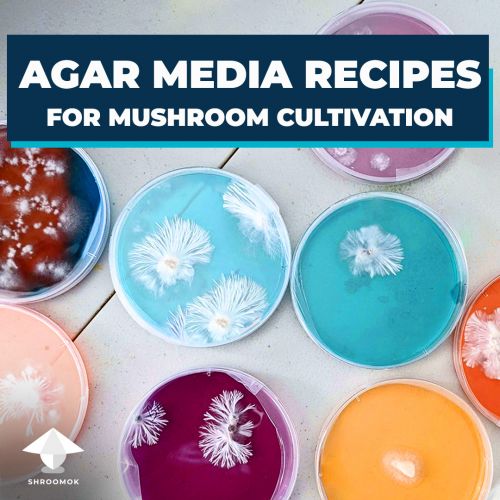
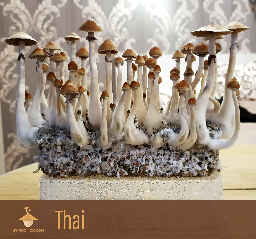
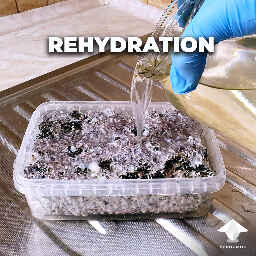

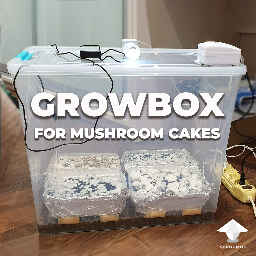
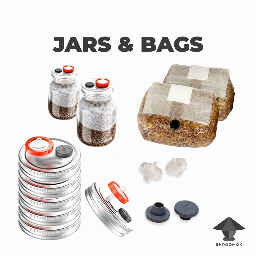
Comments
This information is very useful, thanks so much for sharing, I've only had a little success so far, and after reading this I'm feeling much more positive about my future results.
I’m shocked at the usefulness of this article. Thank you so very much!
I love these recipes I have used most of them in my 7 years of mushrooms studying. All except the complete nutrition agar and the cornmeal. Going to try the cornmeal today, and a liter with activated charcoal. Need to get a few more ingredients for the complete agar recipe. Thank you so mush for sharing this and for making this kind of information accessible to the public. So much research and information is wasted on corporations and private research sectors.
Add comment